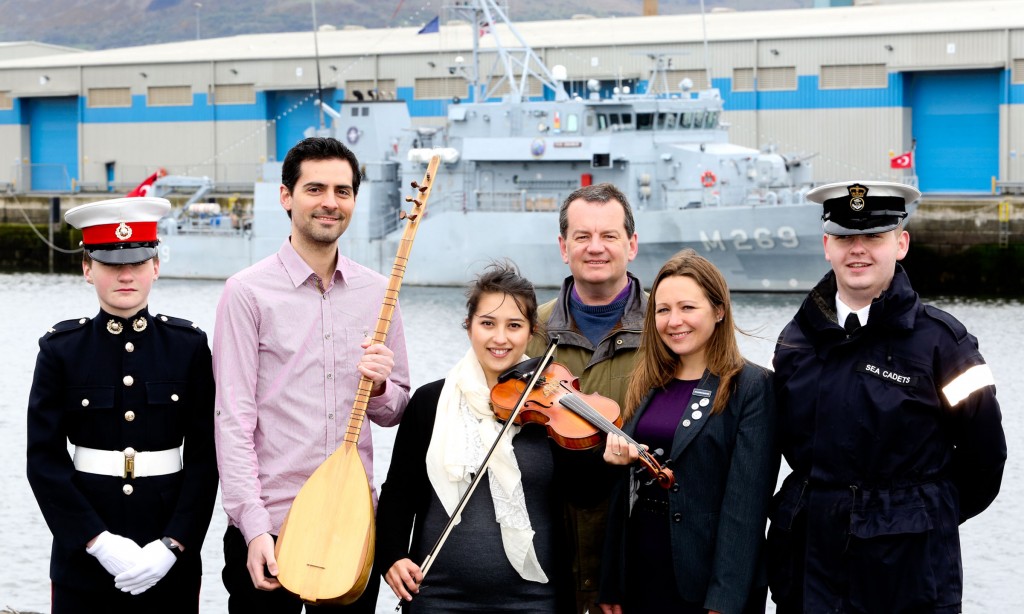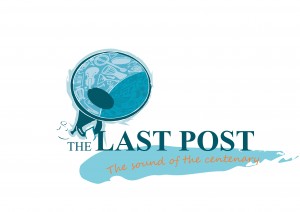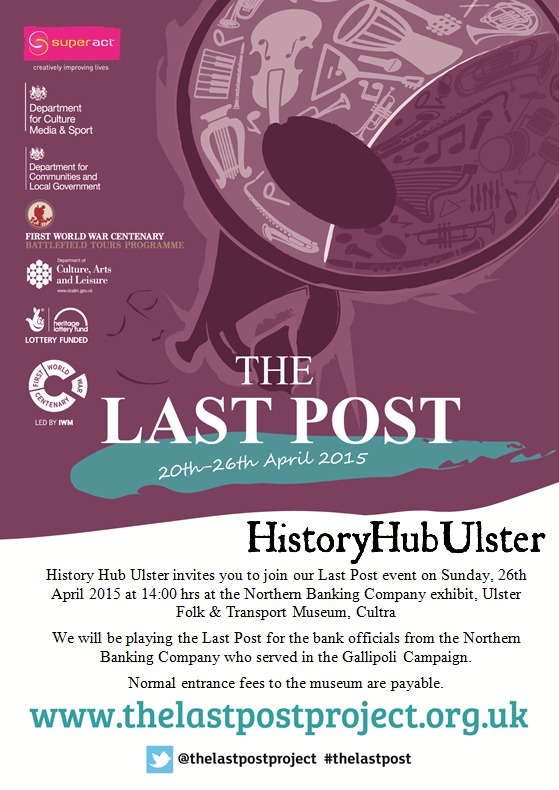Turkish minehunter TCG ANAMUR and German minehunter FGS BAD BEVESEN were yesterday at Pollock Dock in Belfast on the Centenary of the Commencement of the land campaign on the Gallipoli Peninsula.
History Hub Ulster, as part of the national Last Post Project, commemorated those naval personnel lost at Gallipoli from all countries involved in the First World War campaign. Musician Ioannis Tsioulakis played Turkish folk song Canakkale Turkusu on traditional Turkish instrument the baglama, and Clare Galway played the Last Post on violin adjacent to TCG ANAMUR berthed at in Belfast Harbour.
Senior Naval Officer Northern Ireland, Commander John Gray, History Hub Ulster Chair Karen O’Rawe and sea cadets from TS Eagle and TS Formidable joined them to remember Ulster sailors lost in the Gallipoli campaign.

Senior Naval Officer Northern Ireland, Commander John Gray and History Hub Ulster Chair, Karen O’Rawe at Turkish minehunter TCG Anamur in Belfast Port commemorating the Centenary of the Gallipoli landings as part of the Last Post Project. Playing çanakkale türküsü on bağlama is Ioannis Tsioulakis and playing the Last Post on violin is Clare Galway. Also pictured are a sea cadet from TS Eagle and a marine cadet from TS Formidable.
The Gallipoli campaign resulted in the deaths of over 100,000 Allied and Turkish servicemen in just eight months. Serving both at sea and on land, the Royal Navy and Royal Naval Division lost many men in what was to become an unmitigated military disaster of poor planning that resulted in the loss of more than 44,000 Allied lives. In contrast, the defence of Gallipoli was the Ottoman Empire’s most successful military operation of the war.
One example of the local Ulster losses during the Gallipoli campaign is the loss of HMS Goliath on the 13 May 1915. In total 74 Men from Ireland, at least 18 from Ulster were lost on this ship. HMS Goliath was a pre-dreadnought battleship built by the Royal Navy in the late 19th century. Having been mothballed prior to the outbreak of the First World War, she was returned to full commission. Goliath was part of the Allied fleet supporting the landing at X and Y Beaches during the landing at Cape Helles on 25 April, sustaining some damage from the gunfire of Ottoman Turkish forts and shore batteries, and supported allied troops ashore.
On the night of 12th May, Goliath was anchored in off Cape Helles, along with HMS Cornwallis and a screen of five destroyers. Around 1am the Turkish torpedo boat destroyer Muâvenet-i Millîye eluded the destroyers and closed on the battleships firing two torpedoes which struck Goliath almost simultaneously causing a massive explosion. Goliath began to capsize almost immediately, and was lying on her beam ends when a third torpedo struck. She then rolled over and sank taking 570 of her 700 crew to the bottom, including her commanding officer. Although sighted and fired on after the first torpedo hit, Muâvenet-i Millîye escaped unscathed.

Ioannis Tsioulakis playing çanakkale türküsü on bağlama
Goliath was the fourth Allied pre-dreadnought battleship to be sunk in the Dardanelles. For sinking Goliath, Turkish Captain of Muâvenet-i Millîye, Ahmet Saffet Bey was promoted to rank of Commander (Major) and awarded the Gold Medal. The German consultant, Kapitänleutnant Rudolph Firle was awarded the Gold Medal by the Ottoman sultan and the Iron Cross (1st class) by the German General Staff.

Clare Galway playing the Last Post on violin
There were at least 18 Ulster casualties on board HMS Goliath:
Stoker (1st) Class Hector Hiles RN aged 28 from Derwent Street, Belfast
Stoker Robert Jones RNR aged 43 from Sandy Row, Belfast
Stoker John Jones RNR aged 42 from Sugarfield Street, Belfast
Stoker John McAnally RNR aged 45 from Linen Street, Belfast
Stoker Robert John McDowell RNR aged 22 from Leopold Street
Stoker Thomas Warnock RNR aged 37 from Marine Street, Belfast
Seaman Gordon Douglas Simpson RNR aged 24 from Windsor Avenue, Belfast
Stoker (1st) Class Hugh O’Donnell RN aged 40 from Cliftonville Road, Belfast
Stoker Charles Holland RNR aged 44 from Belfast
Private Alexander Harkness RMLI aged 29 from Ballygarvey, Antrim
Able Seaman James Kelso RN age 22 from Kilkeel, Down
Stoker (1st) Class William Ernest Beringer RN aged 28 from Portaferry, Down
Private Robert Hutchinson RMLI aged 32 from Creggan Road, Derry
Leading Seaman John Doherty RN aged 34 Culmore Road, Derry
Seaman John Joseph Dennis RNR aged 22 from Clooney Terrace, Waterside, Derry
Able Seaman Philip Wright RN aged 35 from Ballyarnett, Donegal
Petty Officer (1st) James John Beauchamp RN aged 48 from Castleblayney, Monaghan
Boy (1st) Class Philip Duffy RN aged 17 from Clones, Monaghan
The Last Post project: The Last Post is a mass participation project for the First World War centenary taking place from 20-26 April that will see people unite in communities around the UK to remember the impact that the First World War had on their local area and play music from the era as a mark of commemoration. At every event held this April, the Last Post bugle call will be played to remember someone connected to the community – not just on bugles but on any instrument from piano to bagpipes, guitar to drums. Part of the First World War Centenary, The Last Post Project is funded by the Department for Communities and Local Government, Heritage Lottery Northern Ireland and Department for Communities Arts and Leisure Northern Ireland.
Royal Navy: Another Ship to participate in the Gallipoli Campaign was HMS Hibernia, a King Edward VII class pre-dreadnought battleship launched in 1905. Hibernia’s Ulster connection is more modern due to her latest incarnation as the Royal Naval Reserve unit based in Lisburn. To mark Hibernia’s presence off Gallipoli, Ulster’s RNR were included in the Centenary parade in London on Saturday 25th April as part of the Naval marching contingent.
Research by Karen O’Rawe, Chair History Hub Ulster.
Photos by Aurora


